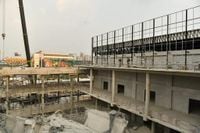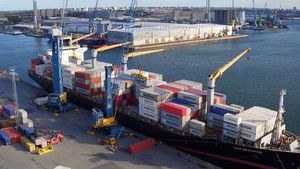On April 16, 2025, tremors were felt across Bangkok, raising concerns about the safety of older buildings in the city. These tremors were attributed to an earthquake that struck Myanmar on March 28, 1968, measuring 8.2 on the Richter scale with a depth of 10 kilometers. The earthquake's epicenter was located in Myanmar, but the effects were felt as far as the northern and central regions of Thailand, including Bangkok. The tremors were significant enough to cause the partial collapse of an under-construction building for the Office of the Auditor General in the Chatuchak area.
According to Visanu Sapsomphol, the Deputy Governor of Bangkok, the city has installed seismic measuring devices on the top of the Thani Noparat Building and on the Rama VIII Bridge. These devices measure Peak Ground Acceleration (PGA), which is crucial for assessing the structural integrity of buildings during seismic events. The PGA is expressed in units of g (gravity) or millig (mg), where 1 g equals 1,000 mg. The scale of ground acceleration can indicate the potential damage to structures, with values below 20 mg (0.02 g) being barely noticeable and values above 500 mg (0.5 g) indicating severe risk of collapse.
In a statement, Visanu explained how the PGA values correlate with building safety. For instance, values between 20-50 mg (0.02-0.05 g) are felt but not damaging, while values from 100-200 mg (0.1-0.2 g) can cause significant shaking. Buildings constructed before 2550 BE (Buddhist Era) may not withstand seismic activity as effectively as those built after that year, which are designed to handle greater forces.
Recent measurements taken on April 16 showed a ground acceleration of 123 mg at the Thani Noparat Building and 75 mg at the Rama VIII Bridge. These values were above the actual tremors experienced but remained within the safety thresholds established for buildings. Visanu noted that the data collected from these instruments helps determine the level of impact the earthquake might have on Bangkok. For example, if a hospital's seismic readings are below a certain threshold, patients do not need to be evacuated, as hospitals are typically designed to withstand more severe shaking than standard buildings.
"The ability to monitor seismic activity provides crucial data that allows us to assess the risk to structures in real time," Visanu stated. "For instance, if we detect a ground acceleration above 500 mg, it indicates a risk of collapse. Fortunately, the recent tremors do not pose a significant threat to completed buildings, although some ongoing constructions, like the Auditor General's office, may face challenges."
Notably, Bangkok's building regulations have evolved since 2550 BE, with the 2564 BE regulations mandating that structures be designed to withstand seismic forces of at least 200 mg. This regulatory framework aims to enhance safety and ensure that buildings can endure seismic events without catastrophic failure. Visanu emphasized that the city's infrastructure is generally robust, with many structures built to last for 50 to 60 years.
However, the recent earthquake has sparked discussions about the need for better preparedness and monitoring systems. The Network of Students and People Reforming Thailand (NSPRT), led by Phichit Chaimongkol, highlighted the government's responsibility to address public safety concerns following the tremors. Phichit criticized the government for not prioritizing immediate action and urged officials to ensure that no harm comes to residents as a result of seismic activity.
"If the government can respond effectively to these tremors, it will help restore public confidence in their safety measures," Phichit remarked. "We need to see more than just words; we need real action to protect our citizens from potential disasters. If the damage exceeds 500 million Baht, it would be a clear sign that the government is failing in its duty to protect the public."
Phichit also mentioned that the NSPRT is prepared to assist the government with information on installing and measuring earthquake detection devices, emphasizing the importance of having reliable technology to monitor seismic activity.
In a related development, the Pheu Thai Party plans to inspect high-rise buildings in the Na Bon area of Nakhon Ratchasima Province on April 25, 2025. This inspection comes in light of concerns regarding the safety of structures built in the region, particularly in the wake of the recent tremors felt in Bangkok. Phitha Limcharoenrat, a prominent figure in the Pheu Thai Party, will lead the inspection, accompanied by other party members.
The Pheu Thai Party has expressed concerns about the selection of contractors for construction projects in District 8 of Nakhon Ratchasima, particularly in light of the recent seismic events. The party aims to ensure that all buildings are constructed to meet safety standards and can withstand potential earthquakes.
As the government and political parties navigate the aftermath of the recent tremors, the emphasis on building safety and public confidence remains paramount. The installation of seismic monitoring devices is seen as a crucial step in enhancing the city's preparedness for future seismic events, ensuring that structures are resilient and that residents are safe.
In summary, the recent earthquake has highlighted the importance of earthquake preparedness in Bangkok, prompting discussions about building safety and the need for improved monitoring systems. As the city continues to assess its infrastructure, the collaboration between government agencies, political parties, and civic organizations will be essential in ensuring public safety and confidence.






